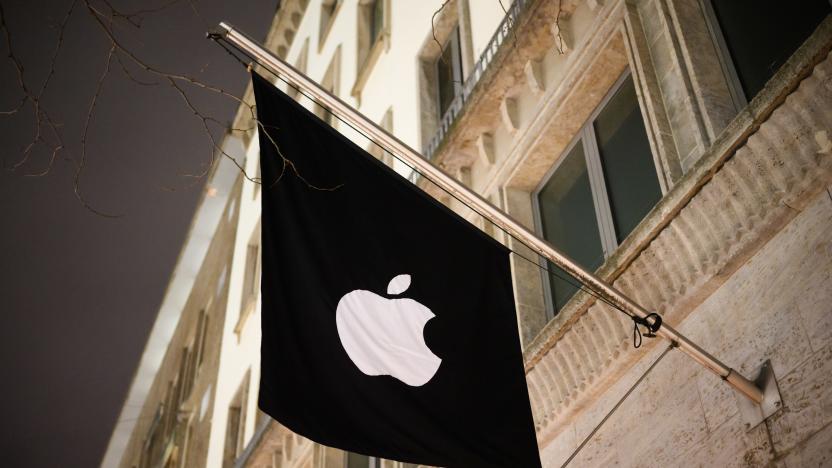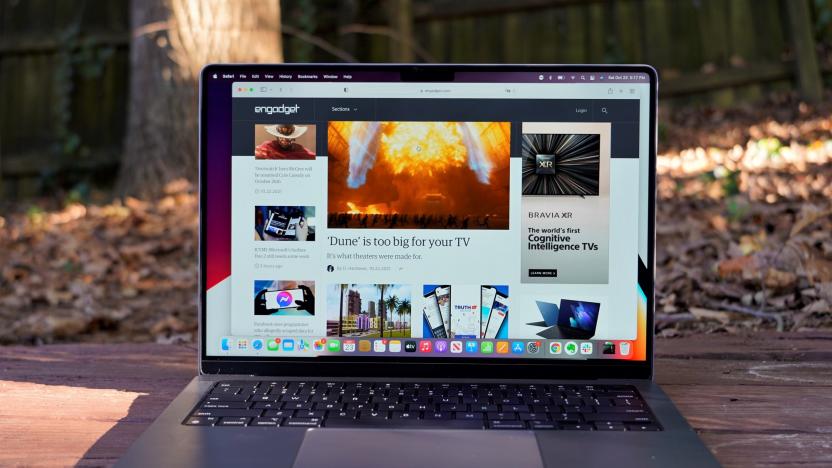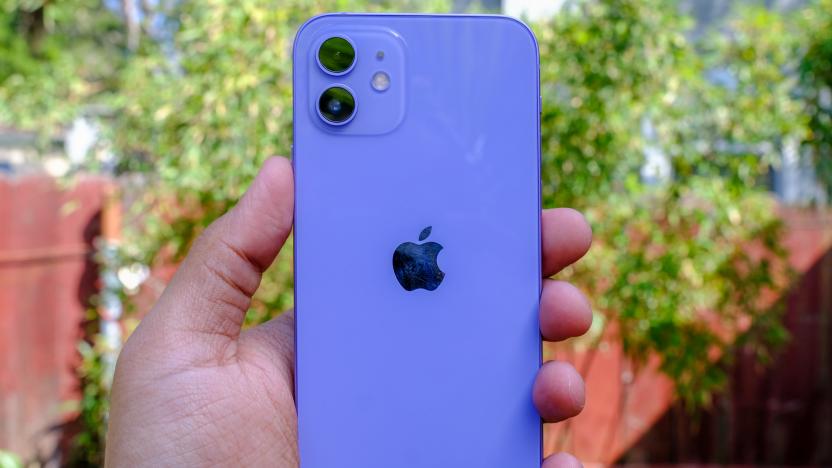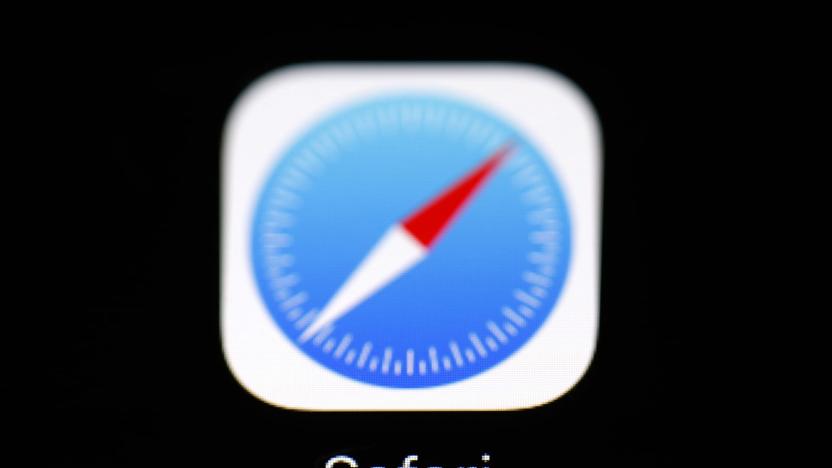webkit
Latest

Apple confirms home screen web apps will no longer work on European iOS devices
Apple has confirmed that it's deliberately disabling progressive web apps (PWAs) in the EU, it wrote in updated developer notes.

Google experiment ditches WebKit for its own engine in Chrome for iOS
Google is testing Chrome's Blink web engine on iOS, but don't expect it in a public browser for now.

Apple's latest iOS and macOS updates fix a major web security flaw
Apple has released a swath of updates that fix a significant web security flaw on iOS, macOS and beyond.

Safari exploit can leak browser histories and Google account info
A security flaw in Safari and WebKit lets sites obtain some of your browser history and Google account info.

Apple releases iOS, macOS and watchOS updates to fix WebKit security flaws
The vulnerabilities may have been 'actively exploited,' so you should update ASAP.

Safari now blocks all third-party cookies by default
Apple's latest flurry of software updates included an important step forward for web privacy. The latest version of Safari for iOS, iPadOS and macOS now blocks all third-party cookies by default -- it's the first mainstream browser to do so, the WebKit team's John Wilander said. The Tor Browser is the only known browser to do so before Safari, while Brave's browser still has a few (if minor) exceptions.

Apple is trying to make web ads truly private
Apple's privacy push is extending to an area where you might not expect it: web ad tracking. The company's John Wilander has outlined a new system, Privacy Preserving Ad Click Attribution, that would help marketers track the success of ads without tracking individual users. Host sites would store generic ad clicks, while the advertisers' sites would match the number of conversions (people who went on to make transactions) with a 24- to 48-hour delay to prevent profiling. Your browser would send ad click attribution data for those matches, but only in a special, optional private browsing session that prevents cross-site tracking.

Google will remove its name from fast-loading mobile URLs
Google's fast-loading, data-saving AMP sites help you mainline morning news on the train to work, but they come with an undesirable side effect. As you will've noticed, the URL for an AMP site looks something like this: google.com/amp/www.engadget.com... As Google explains, it starts loading the page before you've even decided whether to click or not. For that and privacy reasons, Google has to be the middle man, though it has figured out how to nix that URL prefix in its mobile Search apps. In the latter half of 2018, though, Google has said it expects to be able to remove the AMP signature from URLs in Chrome and other smartphone browsers, too.

OS X update fixed 'simple' bug that could leak your iMessages
Researchers explained one large security hole in Apple's iMessage app that received a patch last month, but until now we didn't have details on another vulnerability fixed at the same time. By tricking users into clicking a specially-crafted link, hackers could gain access to the usually encrypted communications in OS X El Capitan's Messages. "You don't need a graduate degree in mathematics to exploit it, nor does it require advanced knowledge of memory management, shellcode or ROP chains," according to security researchers at Bishop Fox -- just knowledge of basic JavaScript.

Google explains why it's not fixing web security in old Android phones
You might not be happy that Google isn't fixing a web security flaw in your older Android phone, but the search giant now says that it has some good reasons for holding off. As the company's Adrian Ludwig explains, it's no longer viable to "safely" patch vulnerable, pre-Android 4.4 versions of WebView (a framework that lets apps show websites without a separate browser) to prevent remote attacks. The sheer amount of necessary code changes would create legions of problems, he claims, especially since developers are introducing "thousands" of tweaks to the open source software every month.

Happy 12th Birthday, Safari!
Kids just grow up so quickly... On January 7, 2003, Steve Jobs announced at Macworld San Francisco that Apple had developed its own web browser called Safari. On that day, the first beta version was released. Apple based Safari 1 on its internal fork of the KHTML rendering engine known as WebKit. Four years later, almost to the day on January 9, 2007, Jobs announced the iPhone and noted that it would use a mobile version of the Safari browser. Six months later, at the 2007 WorldWide Developers Conference, Jobs announced Safari 3 for Mac OS X v10.5, Windows XP and Windows Vista. At the time, Safari 3 was the fastest web browser for Windows. Of course, the company has since dropped support for Windows. The latest iteration of OS X Safari is version 8, released with OS X 10.10 Yosemite. It includes WebGL support for native 3D browser experiences; IndexedDB, which allows structured data to be cached client side and store data for web applications; JavaScript Promises, which lets JavaScript authors to work with asynchronous programming patterns more easily; CSS Shapes and Compositing, which means that websites can flow text around images and geometry shapes; SPDY, an open protocol websites can adopt for speeding up page loads and improving security; and HTML5 Premium Video, to deliver encrypted and energy-efficient video to the browser. We can't wait to see what happens to Safari when it becomes a teenager next year... Meanwhile, here's the announcement of Safari at Macworld in 2003.

Opera's Android browser gets dedicated support for bigger tablets
After jumping aboard the WebKit train and launching a dedicated browser for the iPad, Opera's now turned its attention to Android tablets. With the release of Opera 18 for Android, the company is quick to note that it didn't just update and scale up its smartphone browser: navigation and menu buttons have been strategically placed to where your fingers naturally rest and its improved Discover feature lets you swipe between newspaper and magazine content that has been matched to your interests and location. Like with all its browsers, Opera's Android tablet app comes complete with data-saving capabilities. Off-Road mode is designed to help you stay online when you're on a public Wi-Fi connection or trying to reduce your data usage, basically when connectivity is less than ideal. Underpinned by Google's Chromium 31 framework, Opera's big-tablet app is available on Play Store right now -- check the source to grab it.

Opera 15 Chromium-based browser officially launched for PC and Mac
While the non-final build of Opera's new browser for PC and Mac was simply called "Next," today it's chosen the more formal title of Opera 15 for its official release. There aren't any features of note that we hadn't seen in the desktop preview of the WebKit-based software (or should we call it Blink-based?), but to jog your memory, it sports a fresh design, a Discover feature for catching up on the latest news and a tweaked Speed Dial menu for quick access to your favorite corners of the internet. Also, the web-clipping Stash feature, predictive address-cum-search bar, new download manager and "Off-Road mode" for extra compression on lousy connections are all included in the final version. We ran a quick SunSpider benchmark on the Mac build of Opera 15, in which it scored 167ms, compared with 171ms in Chrome. If you're not already allied to one of the many competing browsers and feel like giving Opera 15 a try, head to the source below for the download links.

Opera desktop preview brings web clipping and other tools, splits from Opera Mail
Opera for desktops may be a couple of steps behind the recently finalized Android version, but it's coming along nicely. A preview build of the now WebKit-based browser (or, technically, Blink-based) is available to try on Windows and Mac with a bunch of features which in some ways look similar to other browsers and add-ons, but which also do things a bit differently: Speed Dial -- a home tab that brings large tiles and folders for quick access to favorite sites Stash -- a web clipping tool that follows a similar big-tile aesthetic (shown above) Smartbox -- a search box that not only predicts what you're looking for but also offers to hunt for it on different search engines, such as Google or Twitter. One thing you won't find is an integrated Opera Mail client, since that's been split from the desktop browser (due to "popular demand") and is now available as a release candidate for a forthcoming standalone product. You'll find full download linkage below.

DevJuice: Apple's ObjC-JavaScript Bridge
In a new post at his Steamclock Software blog, Nigel Brooke writes how Apple has added new Objective-C-to-Javascript bridging to WebKit: "This new API supports straightforward embedding of the JavaScriptCore interpreter into native Objective-C projects, including reading and writing variables and object members with appropriate type coercion, calling methods on JavaScript objects, and directly binding Objective-C objects into JavaScript." The API performs its bridging using Objective-C protocols, enabling you to bind JavaScript calls to Objective-C implementations. If you'd like to give the tech a test, Brooke has posted a working sample project at github. Hat tip iOS Dev Weekly

Google's Blink team pulls 8.8 million lines of WebKit code in one month
Google let us all know that it would strip out unneeded WebKit code to make its Blink web engine scream, but it never said exactly what kind of pace we could expect. The answer, it turns out, is "breakneck." The company's Alex Komoroske told Google I/O attendees that the Open Web Platform team has already yanked 8.8 million lines of programming from Blink in about a month, with 4.5 million of them scrubbed almost immediately. Removing so much cruft has reportedly improved not just the upcoming engine, but the engineers -- they're far more productive, Komoroske says. The team has already had time to explore new rendering techniques and garner code contribution requests from the likes of Adobe, Intel and even Microsoft. Although we don't yet know if all the trimming will be noticeable to end users by the time Blink reaches polished Chrome and Chrome OS releases, it's safe to say that some developers won't recognize what they see.

Webkit's Chromium-specific code to be removed in effort to streamline
Now that Chromium has pledged its allegiance to Google's new Blink rendering engine, Webkit is set to have the now-unnecessary Chrome-specific code stripped from it. Apple Webkit developer Geoffrey Garen kicked off a conversation on the project's mailing list about removing the Mountain View-centric cruft, saying that it would streamline things and hopefully "make development easier and more coherent for everyone." Garen adds that Googlers Adam Barth and Eric Seidel have already offered to pitch in with the clean up, but he asks that devs who will continue using the engine tidy things up as well. Over the next few weeks, code in Webkit related to the search giant's browser, such as the V8 JavaScript engine, will be put up on the chopping block. With a Blink-infused Chrome slated to arrive in roughly 10 weeks, these changes shouldn't mean much for the average web surfer, save for Webkit being a bit trimmer under the hood.

Google's Blink engine (gently) hints at a more streamlined future for Chrome
Word that Google had decided to fork WebKit and build its own rendering engine is still echoing through the spidery halls of the internet. The true ramifications aren't entirely clear yet, but Opera has pledged to embrace Blink and WebKit is already talking about removing Chrome-specific code from its repositories. This doesn't necessarily indicate a seismic shift in the industry, but it certainly suggests that we won't be looking at a world so thoroughly dominated by the direct descendant of KHTML. At least at first, the new entrant won't actually deviate much from WebKit. Primarily the focus will be on stripping away unnecessary code and files to streamline the rendering engine specifically for Chrome. Obviously, this won't prevent other developers from using Blink, since the project is open source. But Google has been pretty up front about the rationale behind the fork -- the multi-process architecture favored by Chromium-based projects is quite different than that used in other WebKit browsers. This has, to put it in the plainest terms possible, kinda gummed up the works. Blink is about 10 weeks away from landing in the stable version of Chrome (it's expected to be turned on by default in version 28), but it's already available as part of the Canary build. We downloaded the experimental browser and spent some time with it in an effort to identify what, if anything, was different. Keep reading after the break to find out just what Google has bought by shedding some of WebKit's baggage.

Google forks WebKit with Blink, a new web engine for Chromium and Chrome (update)
You could call WebKit the glue that binds the modern web: the rendering engine powers Apple's Safari, Google's Chrome, and many mobile browsers past and present. Things are about to unstick a little. Google believes that Chromium's multi-process approach has added too much complexity for both the browser and WebKit itself, so it's creating a separate, simpler fork named Blink. Although the new engine will be much the same as WebKit at the start, it's expected to differ over time as Google strips out unnecessary code and tweaks the underlying platform. We'd also expect it to spread, as the company has confirmed to us that both Chrome and Chrome OS will be using Blink in the future. We're safely distant from the Bad Old Days of wildly incompatible web engines, but the shift may prove a mixed blessing -- it could lead to more advancements on the web, but it also gives developers that much more code to support. Update: The Next Web has confirmed that Opera, which recently ditched its Presto engine for Webkit, will indeed be using Blink as it's already hitching its proverbial wagon to Chromium.

Hands-on with MiiPC, the $99 kid-safe Android PC (video)
It was only two days ago that ZeroDesktop launched MiiPC, a $99 kid-safe Android PC, and the Kickstarter campaign's already surpassed its $50,000 goal. To jog your memory, MiiPC is an attractive 4.7 x 4.7 x 3.1-inch desktop computer running Android 4.2 (Jelly Bean). It's powered by a 1.2GHz dual-core Marvell New Armada SoC with 1GB of RAM, 4GB of flash storage, WiFi b/g/n and Bluetooth 4.0. The system features an SD card slot in front, a power button on top and a full array of ports in the back, including two USB 2.0, HDMI, analog audio I/O, Ethernet and power. What makes this device so unique is the software, which is optimized for use with a large screen (up to 1080p), keyboard and mouse. It provides a desktop-class web browsing experience with Flash and runs standard Android apps. MiiPC supports multiple user accounts which can be controlled and monitored remotely in real-time using a companion app for iOS and Android. The idea is for parents to create a safe online environment for their kids by managing their access to the web and to apps. We got the chance to play with a prototype MiiPC yesterday -- read our impressions and watch out hands-on video after the break. %Gallery-183957% %Gallery-183993% %Gallery-183994%










